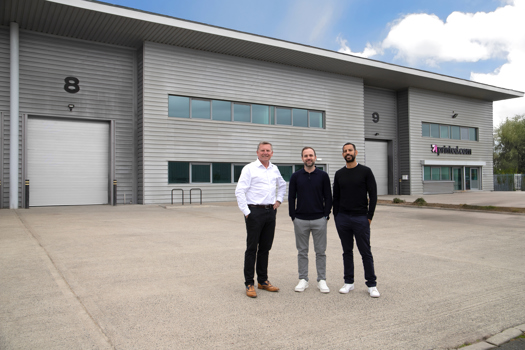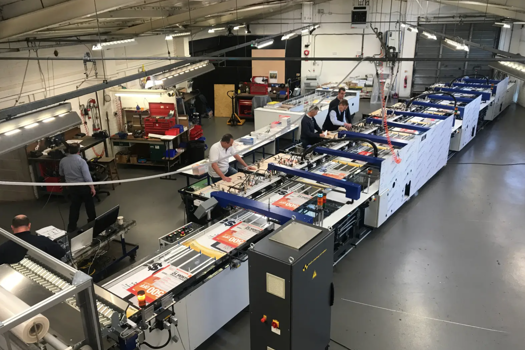And before you know it you are staring at a blank screen that indicates every printer’s greatest fear: a complete failure of your IT system.
“Imagine losing your data for 24 hours; how would you manage to recreate it to cover all the work lost, and how much revenue would you lose?” asks Paul Deane, managing director at Shuttleworth MIS.
In reality, systems could take even longer than 24 hours to reboot after a simple IT failure. With other issues that could arise – flooding or fire for example – then it could take weeks, if not months, to get back up and running.
It is understandable, therefore, that disaster recovery software has grown in popularity among printers. So reliant is a print operation on its IT infrastructure now that the cost of putting such a system in place is far outweighed by the potential costs incurred should disaster strike.
“We feel we have to have an automated system that backs up all jobs, data and work in progress and can recreate in minutes, if there is a hard drive failure,” explains Nigel Stubley, managing director at Northend Creative Print Solutions. “It is a manageable and essential cost of doing business in this sector.”
That cost can differ greatly depending on the kind of disaster recovery option you want in place.
“There are many solutions available to get your system back up and running after a hardware failure,” says Deane. “There are a range of solutions to suit all budgets and business requirements.”
At Shuttleworth, examples of solutions that are currently available include everything from a standard USB database back-up combined with ‘after imaging’ software, which enables you to get up and running within 15 minutes of the hardware failure; to an off-site disaster recovery solution to which, in the event of a disaster and a customer with no access to the office, Shuttleworth can restore the data from a back-up.
Clouds and consolidation
There are also back-up options that employ cloud solutions and Windows software, says Deane. An example of the latter can be found at Leeds-based envelope printer GNE. Shuttleworth has just set up Microsoft Hyper V 2012 at the envelope printer. The software can provide replication, which consolidates a single server into many virtual servers. “This means if a server fails you can migrate to another with minimal downtime and you can restore to a version of backed-up data,” says Deane.
Fujufilm also uses the Hyper V capability for its XMF workflow.
“Our XMF Workflow supports the Microsoft Windows 2012 server OS, which means we can provide disaster recovery solutions using Microsoft’s Hyper-V and Hyper-V Replica technologies,” says John Davies, business strategy manager for the European Software Business Unit at Fujifilm Europe. “This can provide a variety of solutions depending on the printer’s requirements, including a live back-up system, a fault tolerant system that would provide automatic switching to a standby server, and the ability to keep the live back-up system in a different location within the premises or even off-site.”
Heidelberg’s Prinect workflow has similar capability, though not using the Hyper-V software. Product executive John Murphy says that several disaster recovery systems can be built into Prinect.
“All of our workflow servers are fitted with multiple power supplies and network adapters – this would enable us to resolve hardware component failure very quickly,” he says. “Also, whenever a job is worked on in the cockpit the system automatically retains the previous saved version of the job (JDF). If an operator was to delete something or change a layout the operator is re-assured that he can always return to a previous incarnation of the job (up to a maximum of 10 steps back).”
He adds that most Prinect systems are sold with the Prinect Archiver product. “Archiving and purging are separate processes so customers are encouraged to archive data whenever it is worked on, just as you would save a word or QuarkXPress file,” says Murphy. “This creates two copies of the data and avoids issues with single points of failure. Alternatively the customer may choose to include an incremental back-up of the job data as part of the back-up mechanism.”
For some printers, extra disaster recovery systems are built in to the Prinect system. “With a catastrophic hardware failure, our Prinect workflow product is modular so it is possible to run the system (to a lesser degree) even if the main server is no longer available. Our Meta Dimension product (normally used for TIFF-B render) can be driven directly from Prinect SignaStation, our imposition product – several sites have this emergency system configured and ready to go should it be required.”
It all sounds, and can be, very complicated. Navigating the options is extremely tough, especially if you are a smaller business without the time nor specialist IT knowledge to assess the options.
This is why most disaster recovery specialists will spend some time assessing your business to ascertain how much in reality you need to spend and what kind of system would suit you best.
“We offer customers free consultancy visits to discuss their individual requirements,” says Deane. He adds that such consultancy visits should be regular occurrences as the leaps in technology – and indeed reductions in cost for the amount of capability you get – mean printers could quickly be out of date or missing out on more cost-effective solutions.
“Technology moves on very quickly and we would advise that customers book a software heath check on a regular basis as the latest solutions are generally more reliable,” he says.
Keep on running
Reliability is not the only factor. Printers also need a system that will not infringe too much on their day-to-day operations. The last thing you need is for a server to be slowed down at a critical point because the system is creating back-up files.
This was a concern for Stubley. “Our system is designed to be as automated as possible, with the minimum of human intervention so that it isn’t detrimental to our service levels,” he explains.
If you do opt for automated back-up options, particularly those that run overnight, Deane says it is important to check everything is working regularly.
“We provide advice on how to maintain and check the software is working correctly,” says Deane. “It is important that the back-ups are checked on a day-to-day basis. And if you are not using a cloud solution it is important that a recent back-up is stored off-site.”
But Paul Manning, managing director at Rapidity, has issues with this last piece of advice.
“In my opinion and experience there is absolutely no point whatsoever in backing up data and information off-site unless you have the means and equipment to use that data in case of emergency,” he says. His view is that if your site is inaccessible, then having the data is pointless unless you have print kit off-site too, as the turnaround for the job generally means a client would have to go elsewhere by the time you get back up and running, so that saved data becomes unnecessary.
“Unless you are a sole contractor for your customer it is unlikely your ad hoc or framework contracted customers will want to pay higher prices to cover the investment in, or expect you to have, a satellite production site for disaster purposes,” he continues. “Therefore the only reason you would need the data off-site is to use it should you be able to operate a genuine reciprocal arrangement with another print company.
“However, in my honest opinion, these reciprocal arrangements are often cited as a company’s policy but are rarely practical due to the fact that other print companies would be too busy to incorporate another company’s work at no notice.”
Manning explains that this only leaves one other option: paying a third-party print production disaster recovery company a retainer for use on their equipment should a disaster arise.
“Again, however, no print company would do this unless they have been specifically requested to by their customer, either as a sole contractor or a supplier to a customer who is willing to pay for such a service,” says Manning. “So while disaster recovery is important to my company and we take it seriously, we find our customers who take it as seriously have their own contingency should anything happen to us, by using more than one supplier in different geographical locations.”
Manning has a point. For the larger print companies with multiple sites or capability, the off-site options are likely to prove useful. But for smaller operations, this level of product is likely to be redundant.
This just goes to show why you need a bespoke solution for your individual company. Taking the time to assess the options as Manning has done is crucial if you are to spend the right amount on the right level of coverage.
What is clear – and what Manning does not dispute – is that every printer does need some form of IT recovery plan. Where once printing was a purely physical process, it now very much revolves around computerised systems. So backing those systems up is essential.










